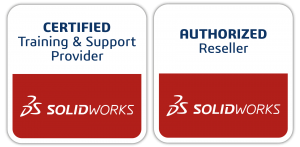Many years ago (actually 25 years, pre-Quicken), my wife was balancing our checkbook when the battery died in her calculator. She came into my home office and asked to borrow mine, I happily lent it to her.
As I expected, she was back a few minutes later with some choice words for me. I lent her my HP 15-C, a calculator that relies on reverse polish notation. If you are not familar with RPN (https://en.wikipedia.org/wiki/Reverse_Polish_notation), you essentially enter the numbers first and then the operation: 3+4= is typed in as 3 4 +. For balancing a checkbook every time you type a number and then click the add button you have the next value for your register.
When you first learn RPN you feel like you are thinking backwards, but once you get use to it there is no going back. A few weeks later she had her own HP 12-C. The HP 12-C is described as a cult classic in Wikipedia.
 Making sweeps correctly in SOLIDWORKS can also feel like thinking backwards. A sweep is constructed by translating a profile along a path and possible affecting the profile shape with additional guide curves. While within the sweep tool the first thing it requests is the profile, the best method for many sweeps is to create the profile last.
Making sweeps correctly in SOLIDWORKS can also feel like thinking backwards. A sweep is constructed by translating a profile along a path and possible affecting the profile shape with additional guide curves. While within the sweep tool the first thing it requests is the profile, the best method for many sweeps is to create the profile last.
 This nose cone is illustrates the practice. Sketch1 contains our path, a straight line; and a guide curve, an arc. This sketch also contains the size control of our elliptical profiles short axis.
This nose cone is illustrates the practice. Sketch1 contains our path, a straight line; and a guide curve, an arc. This sketch also contains the size control of our elliptical profiles short axis.
 Sketch2 contains a second guide curve, an arc; and the size control of our elliptical profiles long axis.
Sketch2 contains a second guide curve, an arc; and the size control of our elliptical profiles long axis.
 Our third sketch contains the profile. The ellipse that resides in Sketch3 is fully defined as it has relationships that constrain it to Sketch1 and Sketch2.
Our third sketch contains the profile. The ellipse that resides in Sketch3 is fully defined as it has relationships that constrain it to Sketch1 and Sketch2.
 The four inputs for the creation of this nose cone come from our 3 sketches.
The four inputs for the creation of this nose cone come from our 3 sketches.
Because Sketch1 included both our path and one of our guide curves we had to rely on the Selection Manager to create open groups. The Selection Manager allows us to include multiple inputs into a single sketch.
You can accomplish quite a bit with sweeps in SolidWorks, even more when you remember to construct your profiles after you have your path and guide curves established.
By Unitec January 17, 2018
